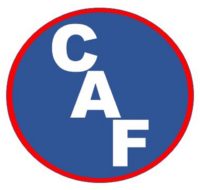W + Conc + A + A = F (Bubbles)
There are many Foam Concentrates on the market. There are also products available that are marketed as good foam products that are not actually foam concentrates at all.
To make Foam, at a minimum, the Concentrate must 1) mix with Water, 2) Produce a variety of bubble sizes, 3) stick to vertical surfaces, and 4) Be environmentally friendly.
NOTE: Always consult the Product Safety Data Sheet (SDS). Some products marketed actually state in the SDS that they are NOT a Foam.
The Foam Concentrate market can be very confusing and the sales people do not make it easier. 1st – A-Foam is a very different product from B-Foam. All the current controversy involving the Firefighting Foam being outlawed and banned due to PFOA’s involves 1 type of B-Foam. A-Foam IS NOT part of this issue.
A products being marketed as use on Class A Fires might be emulsifiers or encapsulators. Both, designed for B-Foam applications will reduce the surface tension of the water in the Solution and as such, are being sold for Class A Fires. But, emulsifiers and encapsultors are not Foams and therefore may not make the water carbon loving, and will not make Bubbles. The Solution will not mix with Air. Read the Labels carefully & READ the SDS carefully BEFORE purchasing. Emulsifiers ARE NOT CLASS A FOAM. Emulsifiers and encapsulators are also not designed to be applied into someone’s home. Think about that!!!
Before Purchasing a Foam Concentrate (link), check with your AHJ (link)to see what Foam products are allowed and which ones are banned.
Since A-Foam Concentrate is basically a detergent, similar to some common household detergents, a department might find it economical to use a cheaper product for training (for example Car Wash Detergent). Again, check with the AHJ and SDS prior to making any such purchase.
A quick note on the New Class B “Green Foams”, read the data carefully. Foam proportioning systems are designed for specific concentrate viscosities. Some of the “Green” foams are higher viscosity and may cause issues in the proportioning systems. Research the data thoroughly and with care.



































